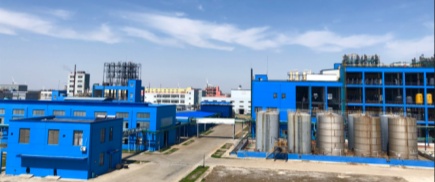Paraxylene (PX) is one of important aromatic products, mainly used in producing terephthalic acid (TPA) and dimethyl terephthalate (DMT). In recent years, the usage of PX for producing DMT is gradually reduced, and the consumption area of PX mainly focused on production of TPA. TPA is one of the important commodity organic chemical raw materials, mainly used in producing polyethylene terephthalate (often referred to as PET resin), a small amount of it is for producing Polybutylene terephthalate (PBT) and polytrimethylene terephthalate (PTT).
Main production enterprises of PX in China are shown in table 1

It is worth mentioning that Sinopec became the 3rdlicenser with upsizing aromatic production technology holding completely independent intellectual property right in the world after UOP and IFP.
2.Price is Swinging Down While Substantial Profit Maintains
In 2013, impacted by depression of down-stream TPA and expanding PX capacity in Asia, PX price in Asia region presents a declining trend after an increase and now a trend of fluctuant decrease dominates. Overall, in 2013, spot average price of PX FOB South Korean is USD 1471 dollars/ ton, a decrease of USD 25 dollars/ ton over 2012, representing a decline of 1.67%.
Since currently eighty percent of devices employ naphtha path to produce PX in Asia, comparing with the plight of loss that the middle and down-stream of polyester industry is confronting with, the overall profit of PX production is still substantial as it is still gaining most of the profit of polyester industry chain.

In recent years, as people’s environmental awareness was sharply enhanced and the market excessively demonized PX, boycott of PX frequently occurred in many places. As a result, PX capacity expansion was hindered and supply gap worsened year by year. In May 2013, the new government officially made the first batch of cancelled and decentralized 117 items requiring administrative approval public, among which the examination and approval of enterprise-invested PX renovation and expansion project from NDRC (National Development and Reform Commission) was cancelled. This action is conducive to stimulating the market’s vitality. For details of PX project in construction, see Table 2.

PX production in China is expected to reach to 9.5 million tons in 2014, an increase of 23.4% over 2013. According to comprehensive analysis of the above projects in construction and proposed to be in construction, based on the current status, it is expected that if taking the unreported projects into consideration, till the end of 2020, the overall PX production capacity in China will amount to about 23 million tons, and the output will be 22 million tons, with an operation rate reaching to about 96%.
3.Rapidly Expanding TPA Production Scale
Almost all the PX in China is applied to produce TPA. Since TPA enterprises in China has large device scale, advanced technology and strong competitiveness, the market share of imported TPA decreased rapidly. Nevertheless, due to constantly putting new devices into production, the competition becomes more and more fierce, and consequently, the enterprises are also trapped in plight.

4.Severely Supply Shortage in China Drives the Degree of Dependence on Import High
In 2013, the apparent PX consumption in China was 16.572 million tons, an increase of 19.9% over the last year; the output was 7.70 million tons, in flat level with last year; the import volume increased sharply to 9.053 million tons, with an increase of 44.0%, hitting a record; the export was 0.181 million tons, a decrease of 5.7% over the last year; degree of dependence on import was 53.5%, an increase of 9.4%. China mainly imported from South Korea, Japan and Taiwan (China) with the volume as 2.81 million tons, 2.17 million tons and 1.63 million tons respectively, accounting for 72.9% of the total import volume. Comparing with 2012, import volume from these three countries increased by47.5%, 22.4%and184.2% respectively.

5.When Promoting Project Construction, Guarantee the Industrial Security
Driven by textile industry (polyester fiber) and packaging industry (beverage PET bottle/PET film), especially the increasing end-use application of those products in China, PET products will maintain steady increase in China, and then drive the demand increasing for TPA/PX. However, in recent years, China has planned lots of PX project including new construction ones and expansion ones, the projects that have practically been put into operation are rare. Heavy dependence on import from overseas drew the PX price high and severely narrowed the profit of down-stream TPA/polyester manufacturing enterprises in China. What’s worse, in 2013, the TPA/polyester manufacturing enterprises even suffered a total loss.
In 2012, China’s petroleum refinery distillation capacity was 660 million tons and it is expected that it will increase to 724 million tons and 840 million tons respectively in 2015 and 2020. In 2012, China’s crude processing volume was 470 million tons and it is expected that it will increase to 540 million tons and 660 tons respectively in 2015 and 2020. In the future, rapidly developing petroleum refining projects in China will be able to supply more raw materials for the development of PX. Government and enterprise shall enhance their ecommunication with the public so as to quicken the pace of new PX project construction, to alleviate the pressure from continuous increasingdegreeof dependence on PXimportand guarantee the industrial safety of PX-TPA-polyester industry chain.


